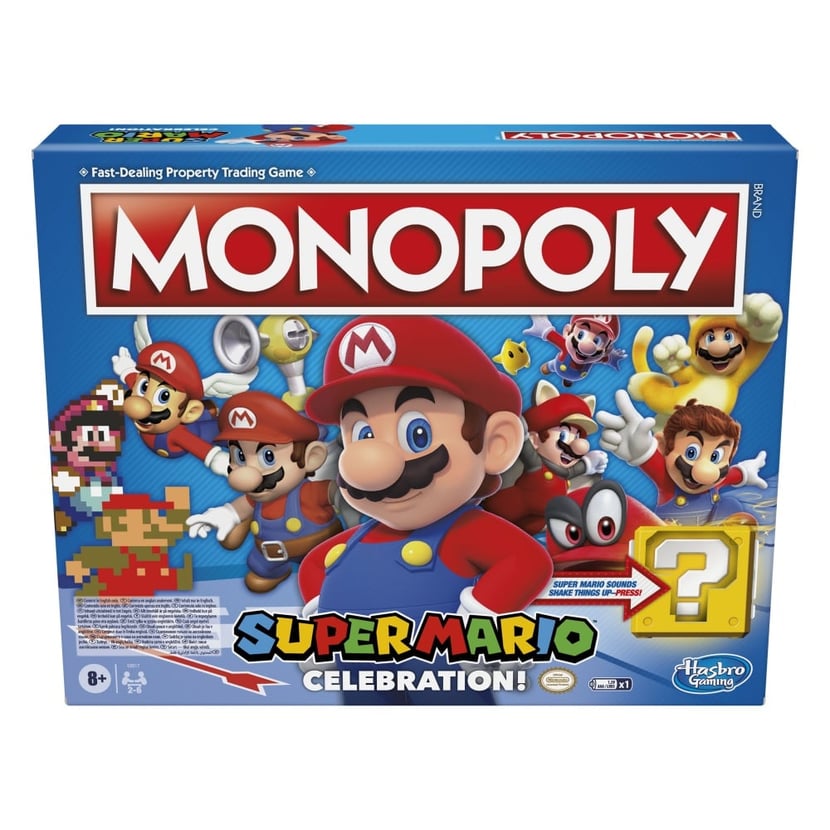
Mario Board Games: When the Red Plumber's Universe Revisites the Classics
Share
824 mots | Temps de lecture : 4 minute(s)
The Mario universe hasn't been confined to our screens for a long time. Nintendo has successfully transposed the energy and imagination of the Mushroom Kingdom into board games , revisiting classics like Monopoly , UNO , and Jenga . But are these adaptations really worth the detour? This guide offers a comprehensive analysis to help you make the right choice.
Summary
- 1. The Mario Invasion: Why so successful?
- 2. Monopoly Super Mario
- 3. UNO Super Mario
- 4. Jenga Super Mario
- 5. Other variations
- 6. Comparison table
- 7. Impact on the market
- 8. Buying advice
- 9. Final Verdict
- 10. FAQ
1. The Mario Invasion: Why so successful?
Since 1985 , Mario has become an intergenerational symbol . Board game publishers use it to reinvent classic mechanics with a familiar universe. The principle: take a popular game, add an attractive visual , adjusted rules and offer a pleasant experience for families and collectors alike.
2. Monopoly Super Mario: Innovation in the service of tradition
The concept
Monopoly Super Mario modernizes the popular real estate game with an electronic board that manages coins, actions, and iconic sound effects . Play as Mario , Peach , Toad , or Yoshi and travel through iconic locations while challenging Bowser .
Benefits
- Fluid digital platform
- Faithful sound ambiance
- Boss Battles adding a real strategic twist
Disadvantages
- Shorter games: may frustrate purists
- Price higher than a classic Monopoly (≈ €45 )
Rating: 7/10
3. UNO Super Mario: Simplicity and efficiency
The concept
UNO Super Mario follows the rules of UNO while integrating special cards : Bowser (redistribution), Mario (turn skip), etc.
Benefits
- Ultra-accessible rules
- Fun illustrations
- Minimum price (≈ €10 )
Disadvantages
- Few deep innovations for seasoned players
Rating: 8/10
4. Jenga Super Mario: When Physics Meets Adventure
The concept
Here, Mario must climb the tower . Each block triggers special effects that spice up the game: rotation of the tower, bonus coins, etc.
Benefits
- Increased suspense thanks to the Mario figurine
- Unpredictable challenges making every round unique
Disadvantages
- Longer setup time
- Delicate handling for children under 8 years old
Rating: 7.5/10
5. Other variations
- Scrabble Super Mario : simplified words + Power-Up bonus to introduce younger players.
- Chess Super Mario : classic chess rules, but re-sculpted pieces (Peach = queen, Bowser = opposing king).
6. Comparison table of Mario games
| Game | Accessibility | Target audience | Innovation | Price | Note |
|---|---|---|---|---|---|
| UNO Super Mario | Very easy | Families, children | Average | 10 € | 8/10 |
| Monopoly Super Mario | Average | Strategy enthusiasts | High | 45 € | 7/10 |
| Jenga Super Mario | Moderate | Evenings with friends | Good | 25 € | 7.5/10 |
7. The impact on the board game market
The success of Mario games illustrates the trend towards merging pop culture with tried-and-tested mechanics . After Mario, we find Pokémon, Marvel, and Disney versions: the "skin + bonus rules" formula proves to be highly profitable .
8. Buying advice
- Identify your main use (children, aperitif, strategy, etc.).
- Test in a games library if possible before investing.
- Compare prices: Mario licenses cost 10-30% more than a standard game.
9. Final Verdict
Mario board games don't revolutionize the genre, but they do offer a fun and accessible experience . For a one-time purchase, go for UNO (portable and inexpensive). For longer sessions, electronic Monopoly is a great option. And for a tactile party game, Jenga Super Mario remains a safe bet.
10. FAQ: Your questions about Mario board games
- Suitable for children under 6? Consider the “junior” versions.
- Mixing classic UNO and Mario? Not recommended: Mario special cards unbalance the deck.
- Are these games increasing in value? Collector's editions do; standard editions less so.
- Planned expansions? No: Nintendo prefers to release a new box rather than an add-on.
